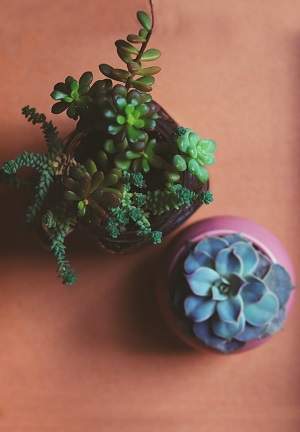How to Take Care of a Succulent Plant
 You’re not alone if you’re wondering how to take care of a succulent plant. Succulents are one of the most popular plants right now. They make wonderful gifts, fun accents and easy to take care of starter plants. They are also very resilient, and yet are often subject to being killed with love. Over-watering and inappropriate lighting are the most common causes of succulent death. With this simple guide on how to take care of a succulent plant, they will be sure to thrive!
You’re not alone if you’re wondering how to take care of a succulent plant. Succulents are one of the most popular plants right now. They make wonderful gifts, fun accents and easy to take care of starter plants. They are also very resilient, and yet are often subject to being killed with love. Over-watering and inappropriate lighting are the most common causes of succulent death. With this simple guide on how to take care of a succulent plant, they will be sure to thrive!
Table of Contents
What is a Succulent?
 Succulents are thick, fleshy plants that store water in their leaves and stems. People tend to think that succulents are only desert plants. They are not all from dry, arid areas. Some are tropical. They can be found in a variety of ecosystems all over the world. With all sorts of colors, shapes and sizes, no matter what the desired design, there is a succulent that will suit!
Succulents are thick, fleshy plants that store water in their leaves and stems. People tend to think that succulents are only desert plants. They are not all from dry, arid areas. Some are tropical. They can be found in a variety of ecosystems all over the world. With all sorts of colors, shapes and sizes, no matter what the desired design, there is a succulent that will suit!
Soil/Potting Medium and Drainage Requirements
 Succulents prefer coarse, fast-draining growing medium. It is available for purchase, and often times cactus mix is used if succulent specific growing medium is not an option. It is often less expensive to make your own.
Succulents prefer coarse, fast-draining growing medium. It is available for purchase, and often times cactus mix is used if succulent specific growing medium is not an option. It is often less expensive to make your own.
- 1.3 pumice

- 1/3 garden soil

- 1/3 compost
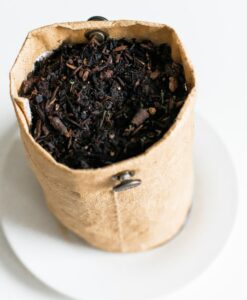
If the succulent is one of the desert variety, use a lower percentage of compost and substitute sharp (large grained) sand.
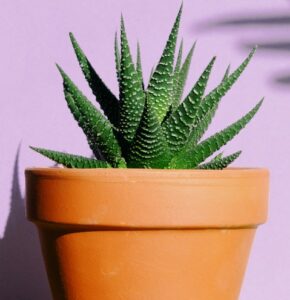 If the native soil is not well draining (a common occurrence with clay) plant the succulents on top of the clay or mounded soil or in raised beds. Planting succulents in containers is a great idea! When grown in containers, make sure to select a planter that has good drainage. Terra cotta planters are good as well because the porous material allows for moisture to escape as well.
If the native soil is not well draining (a common occurrence with clay) plant the succulents on top of the clay or mounded soil or in raised beds. Planting succulents in containers is a great idea! When grown in containers, make sure to select a planter that has good drainage. Terra cotta planters are good as well because the porous material allows for moisture to escape as well.
The potting mix for containers is slightly different.
- 1/2 any bagged potting soil.
- 1/2 pumice
Increase the percentage of pumice for cacti and rotund euphonbia and decrease the percentage of pumice for fine leaved succulents (sedum).
What Kind of Light/Temperature?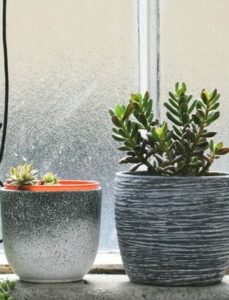
Make sure that the succulents get enough light. The type and strength of light varies, sometimes wildly, depending on where in the world (hardiness zone and elevation) the garden is located. In general, half a day of full morning sun, with afternoon bright or dappled shade is best.
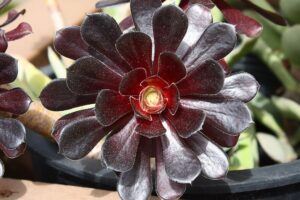 Succulents can suffer from sunburn, and even die if it’s bad enough. The signs of sunburn are generally dark patches or leaves that don’t lighten up again. Some of the stripped (variegated) varieties have less pigment, and therefore tolerate less sun.
Succulents can suffer from sunburn, and even die if it’s bad enough. The signs of sunburn are generally dark patches or leaves that don’t lighten up again. Some of the stripped (variegated) varieties have less pigment, and therefore tolerate less sun.
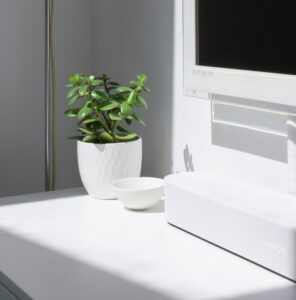 If succulents are indoors, make sure to turn the pot regularly in order to ensure the plant stays growing straight, and that light gets to all sides of the plant equally. Growing succulents indoors is common when outdoor conditions aren’t ideal. Most don’t do well in temperatures below freezing.
If succulents are indoors, make sure to turn the pot regularly in order to ensure the plant stays growing straight, and that light gets to all sides of the plant equally. Growing succulents indoors is common when outdoor conditions aren’t ideal. Most don’t do well in temperatures below freezing.
Feeding and Watering Needs
When it comes to feeding succulents it’s a rule of thumb to use liquid fertilizer at different amounts according to the season.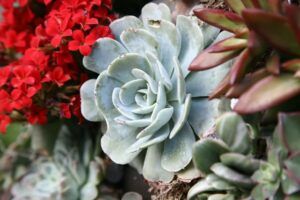
- Summer: 1x a week
- Fall: 2x a month
- Winter: 1x a month (dormancy)
- Spring: 1x/2x a month (diluted with water by 50%)
 Watering succulents is often where many of us end up frustrated. My first several attempts at growing succulents were met with soggy, dead plants that left me confused and defeated. I was then given the sage advice to ignore them more and water them less. (To my gardener’s heart’s dismay.) When I started doing this with my next set of succulents, I found- to my surprise- that they thrived.
Watering succulents is often where many of us end up frustrated. My first several attempts at growing succulents were met with soggy, dead plants that left me confused and defeated. I was then given the sage advice to ignore them more and water them less. (To my gardener’s heart’s dismay.) When I started doing this with my next set of succulents, I found- to my surprise- that they thrived.
Upon this discovery, I did some more research. Succulents like to dry out completely between watering, and they often do not like the common, overhead shower of water I had been using, but prefer to have the soil watered directly.
Pests to Look Out for and How to Deal with Them
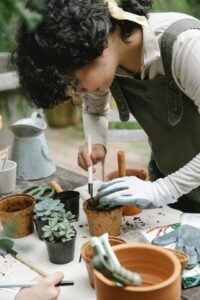 There are less of the more common pests with succulents like gnats and spider mites (although they can be a problem, they are less common with succulents). The more common pests that plague succulents are scale, mealy bugs and root mealy bugs. A cotton swab dipped in alcohol used to gently scrape off these pests is the most common remedy, and then utilization of a spray of 70% rubbing alcohol diluted 50% with water lightly sprayed on the remainder of the plant will help to prevent unseen insects from becoming a nuisance. If the problem persists, treatment with horticultural soap and horticultural oil is recommended, not dish soap. Isolate infected plants, and thoroughly clean the area.
There are less of the more common pests with succulents like gnats and spider mites (although they can be a problem, they are less common with succulents). The more common pests that plague succulents are scale, mealy bugs and root mealy bugs. A cotton swab dipped in alcohol used to gently scrape off these pests is the most common remedy, and then utilization of a spray of 70% rubbing alcohol diluted 50% with water lightly sprayed on the remainder of the plant will help to prevent unseen insects from becoming a nuisance. If the problem persists, treatment with horticultural soap and horticultural oil is recommended, not dish soap. Isolate infected plants, and thoroughly clean the area.
Succulent Propagation from Leaves and Cuttings
 There are so many different types of succulents to discover and enjoy! When it comes to propagation, the genus and species will be the deciding factor of what kind of cutting will result in success. Some Echeverias and most Sedums will propagate with a cutting or a single leaf. Cuttings are the only way to propagate Aeoniums, a single leaf won’t work. The best way to determine what will work with each different variety of succulent is to experiment and see what happens!
There are so many different types of succulents to discover and enjoy! When it comes to propagation, the genus and species will be the deciding factor of what kind of cutting will result in success. Some Echeverias and most Sedums will propagate with a cutting or a single leaf. Cuttings are the only way to propagate Aeoniums, a single leaf won’t work. The best way to determine what will work with each different variety of succulent is to experiment and see what happens!
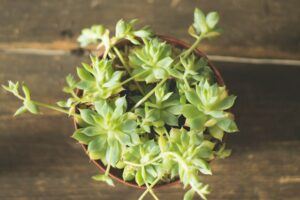 Propagation from a leaf is accomplished by making a clean pull of the entire leaf (most easily accomplished by a gentle twisting), all the way to the stem- getting a bit of stem is preferable to not getting the entire leaf. Getting a cutting is best accomplished by using sharp scissors or pruning shears to cut off a portion oft he succulent just above a leaf on the stem. The top of the succulent or an available offshoot are both good options for a cutting.
Propagation from a leaf is accomplished by making a clean pull of the entire leaf (most easily accomplished by a gentle twisting), all the way to the stem- getting a bit of stem is preferable to not getting the entire leaf. Getting a cutting is best accomplished by using sharp scissors or pruning shears to cut off a portion oft he succulent just above a leaf on the stem. The top of the succulent or an available offshoot are both good options for a cutting.
 Both leaves and cuttings need to scab over in order to ensure they won’t absorb too much water and drown. Depending on the heat, typically between one and three days will do the job; a callus will have formed on the end and it might shrivel just a bit. Cuttings and leaves will need to be watered every day once the callus has formed. If they are turning brownish orange, they are getting too much water, so ease up in order to avoid them dying.
Both leaves and cuttings need to scab over in order to ensure they won’t absorb too much water and drown. Depending on the heat, typically between one and three days will do the job; a callus will have formed on the end and it might shrivel just a bit. Cuttings and leaves will need to be watered every day once the callus has formed. If they are turning brownish orange, they are getting too much water, so ease up in order to avoid them dying.
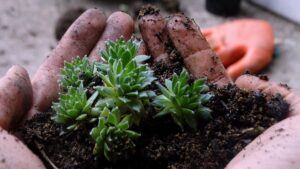 Leaves should be placed on top of the soil, not letting the ends touch the soil, and water them each day with a spray bottle once the soil dries out. Ensuring the soil stays damp will encourage root development; making sure to cover roots with soil once sufficiently grown or they tend to stop developing. The time for new growth to form can vary (depending on the type of succulent, time of year, temperature, humidity, etc.) but can generally be expected in 2-3 weeks. The mother leaf will eventually shrivel and detach from the baby. It’s generally a good idea to wait until the baby is about an inch in diameter before placing it in a pot.
Leaves should be placed on top of the soil, not letting the ends touch the soil, and water them each day with a spray bottle once the soil dries out. Ensuring the soil stays damp will encourage root development; making sure to cover roots with soil once sufficiently grown or they tend to stop developing. The time for new growth to form can vary (depending on the type of succulent, time of year, temperature, humidity, etc.) but can generally be expected in 2-3 weeks. The mother leaf will eventually shrivel and detach from the baby. It’s generally a good idea to wait until the baby is about an inch in diameter before placing it in a pot.
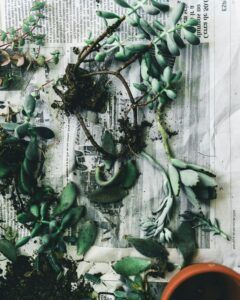 Cuttings do need to be placed in the soil in order to start growing roots. Similar to leaves, cuttings need to be watered every day at first. Do not be surprised if some of the leaves or cuttings fail to thrive or are lost altogether. Especially if it’s the first attempt, it’s normal to lose some. It might take a few tries to get the hang of it, but once the system is mastered, it’s hard to stop! A full-grown succulent can take anywhere from several months to a year, depending on the type.
Cuttings do need to be placed in the soil in order to start growing roots. Similar to leaves, cuttings need to be watered every day at first. Do not be surprised if some of the leaves or cuttings fail to thrive or are lost altogether. Especially if it’s the first attempt, it’s normal to lose some. It might take a few tries to get the hang of it, but once the system is mastered, it’s hard to stop! A full-grown succulent can take anywhere from several months to a year, depending on the type.
It’s Super Easy to Take Care of a Succulent Plant
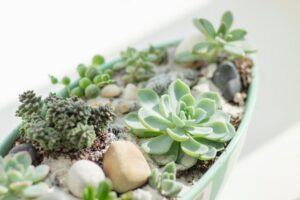 How to take care of a succulent plant is super easy, and the reason they are one of my favorite things to grow. While getting used to the different temperament of the plant variety may have initially taken me a minute, the low maintenance style is exactly what this busy mom, gardener and entrepreneur loves!
How to take care of a succulent plant is super easy, and the reason they are one of my favorite things to grow. While getting used to the different temperament of the plant variety may have initially taken me a minute, the low maintenance style is exactly what this busy mom, gardener and entrepreneur loves!
Do you have any recommendations or feedback to add to the discussion? Please feel free to comment below! I answer every comment. You can also email me at Randi@FairyCircleGarden.com.
Did you like this article? Please share it on your favorite social media page! For more great content please check out our other articles and follow our social media pages on Facebook, Instagram, Pinterest and more!
Gratefully,
Randi

